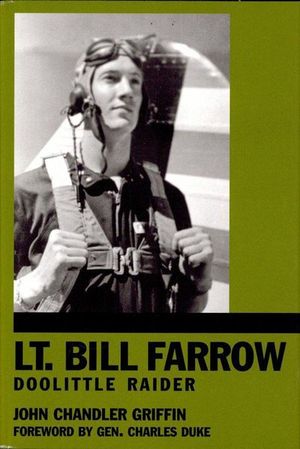Lt. Bill Farrow
Published by Arcadia Publishing
This biography of a Doolittle Raider “provides a closer look at the men who flew the mission, the culture of the time, and the courage of the men involved” (DoolittleRaid.com). Before his untimely and tragic death, Bill Farrow was thinking more about his bank account than patriotism. Stuck in a dead-end job earning ten cents an hour pumping gas, young Farrow found hope for a brighter future as one of the “CCC boys” of the Civilian Conservation Corps. At the University of South Carolina, his character and work ethic grabbed the attention of the Civil Aeronautics Authority in Washington. As one of three students chosen for flight training, Bill received his pilot’s license, joined the Air Corps, and was earning a respectable salary by March 1940. Global tensions were rising, however, and finances soon took a back seat to Farrow’s desire to serve God and country. Piloting the Bat Out of Hell, Lt. Bill Farrow volunteered for the dangerous American secret mission designed to boost morale during the darkest days of World War II. Dubbed Doolittle Raiders after Gen. James H. Doolittle, the commander of the Tokyo raid, Farrow’s crew set out to bring the war to the Japanese homeland by bombing a military target in Nagoya, Japan. Once the Mitsubishi aircraft factory was destroyed, their haven was to be Chuchow Air Field, fifteen hundred miles away in China. They never made it. Running out of fuel, Farrow had to bail out over Japan. Farrow was captured, tortured, and executed after a six-month imprisonment. In this biographical account, Dr. John Chandler Griffin begins by introducing us to the people and events that framed Farrow’s formative years. A solid Christian upbringing anchored Farrow, enabling him to aspire higher despite challenges and hard knocks. Lt. Bill Farrow was posthumously awarded the Distinguished Flying Cross and earned the admiration and respect of a grateful nation. “Serves as an homage not only to [Farrow], but to countless others like him who sacrificed their lives during WWII.” —Veterans Reporter
BUY NOW FROM
COMMUNITY REVIEWS
